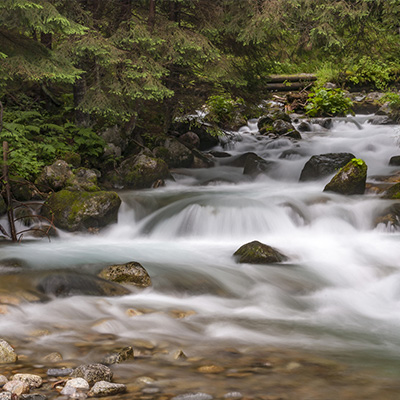Absentee Landowner Services, Timber Sales, and Reforestation
Absentee Landowner Services
Many forestland owners do not live on or anywhere near their forestland. We can assist you with our Absentee Landowner Services. We can check on your property one time or on a regular and continuing basis. Our services for absentee landowners include:
- Checking for insect or disease infestations
- Monitor timber harvesting operations
- Walking and maintaining boundary lines
- Checking gates and fences for signs of trespassing or dumping
- Maintaining firebreaks
- Hunting leases
- Timber trespass/theft
- Illegal substances
- Other
We will provide you with a written report including photographs of our inspections. Contact us to learn more.
Timber Sales
The most important forest management decision a landowner can make is when and how to make a timber sale. The proper timing and execution of the timber sale affects the rate of return on a forestland investment more than any other forest management decision.
Mellette Forestry Group has been handling timber sales for private landowners for over 39 years. We are professionals in the timber business and we are working for the landowner. We will get more money for your timber because we are knowledgeable about the timber market and timber prices. We will cruise your timber and determine how much timber you have and what it is worth. Knowing what you are selling, how to sell it, and when to sell it are key factors in selling timber.
Here is our 10-step Timber Sale service:
- Consult with Landowner to determine objectives for forest property and walk over timberland.
- Perform a Timber Inventory (“timber cruise”) to determine volume and value of timber.
- Discuss with Landowner timber cruise results, estimated value of timber and timber harvesting options.
- Mark or delineate timber to be cut, provide Landowner with appraisal of saleable timber.
- Send bid invitations to all timber buyers in a 50 to 75 mile radius of property informing them of date, time, and conditions of sale.
- Hold bid opening, consult with Landowner on bids, award timber sale to bidder who meets or exceeds appraised value and other specific criteria.
- Assist Landowner in drafting Timber Sale Contract, work with successful bidder to close contract.
- Supervise timber harvesting operations, monitoring adherence to timber sale contract, and all federal, state, and local forestry regulations.
- Conduct final inspection with Landowner; ensure that all terms and conditions of timber sale contract have been complied with.
- If necessary, advise Landowner on reforestation practices needed, assist in obtaining contractors for site prep and tree planting.
Reforestation
The most effective reforestation method for southern pines is tree planting. The advantage of replanting cutover forestland or old fields includes:
- Controlling tree spacing
- Use of genetically improved tree seedlings
- Shorter rotations
- Improved tree growth
- Increased value of the forestland
- Good overall forest health
- Improved financial returns on a forestland investment.
Many reforestation projects by private landowners can also qualify for state and federal cost share assistance. In the south, common pine species planted are loblolly, slash, shortleaf, and longleaf. Choose the tree that is right for your region and site conditions.
Both state and private tree nurseries are excellent sources for pine seedlings. Purchase seedlings that originated from a seed source close to your property. Two types of seedlings are planted in the south: bare root and containerized. Bare root seedlings are usually adequate under most conditions. Containerized seedlings, while more expensive, are better suited for some species such as longleaf pine. Containerized longleaf usually have much better survival rates than bare root seedlings.
Site preparation is critical in order to ensure the establishment of the new forest. Site preparation controls competing vegetation, removes logging debris, and often prepares the soil before planting. Site prep can be mechanical, chemical, or a combination of both.
A tree planting contractor must be experienced and provide references. We commonly prefer using the same contractor to do the site prep and planting. That way, two different contractors cannot point fingers at each other if there is a problem with tree survival.
Supervising the planting operation and conducting a survival check after the first growing season will help to ensure that the contractor does a good job.
Site prep and planting is not cheap. However, the cost is usually offset by the better rate of return earned on a well-managed forest. It is best to set aside a portion of the proceeds of the timber sale for reforestation. If the profit is plowed back into the forest, there will be an increased land value and return on investment.
There are cost-share programs available to help offset the initial cost associated with site prep and planting. State forestry agencies, university extension foresters, and the Forest Landowners Association are good sources of current reforestation costs.



